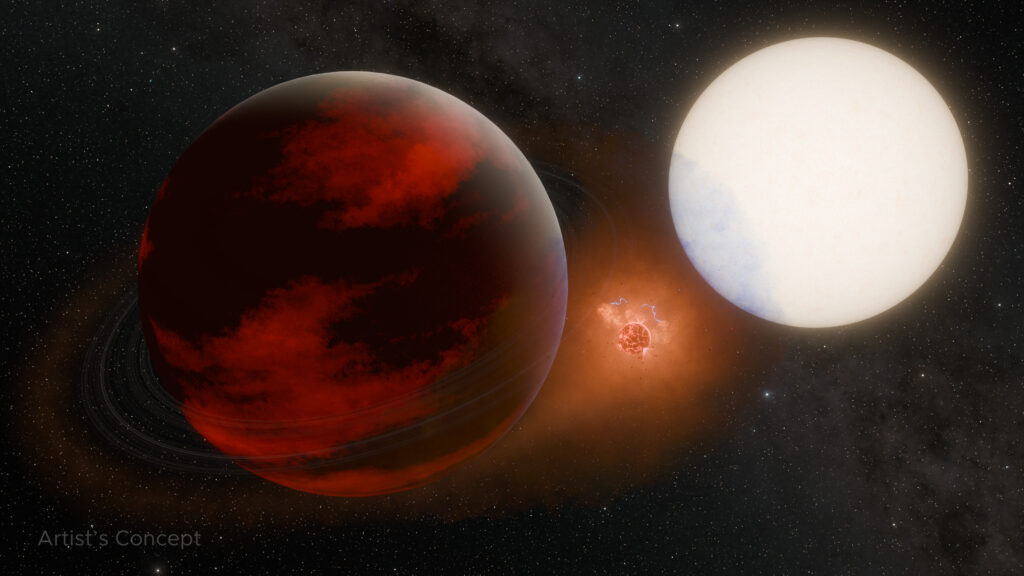A team of researchers from NASA’s Jet Propulsion Laboratory announced the discovery of evidence indicating the existence of a moon at the exoplanet WASP-49 b. It represents a volcanic world similar to Io.

To date, astronomers haven’t been able to confirm the existence of any exomoon (so called moons of exoplanets). This is explained by the fact that they are too small and faint to be detected by modern telescopes.
Nevertheless, exomoons can reveal indirect signs. One of them is volcanic emissions. The volcanoes of Io, the most geologically active body in our Solar System, are constantly erupting sulfur dioxide, sodium, potassium and other gases that form huge clouds around Jupiter that are 1,000 times the radius of the giant planet.
Back in 2017, astronomers discovered a sodium cloud around the exoplanet WASP-49 b. It is a Saturn-sized gas giant that orbits a yellow dwarf located 635 light-years from the Sun. Both WASP-49 b and its star are composed mostly of hydrogen and helium. None of them contain enough sodium to explain the presence of the cloud, which seems to come from a source producing about 100 tons per second. Even if a star or exoplanet can produce this amount of sodium, it is unclear as to which mechanism could eject it into space.
As part of a new study published in the Astrophysical Journal Letters, a team of astronomers has found some evidence that this cloud is created by a volcanic exomoon. For example, they twice recorded a sudden increase in the cloud, as if it had been “refueled” when it wasn’t near the exoplanet. Astronomers have also observed the cloud moving faster than WASP-49 b. This can be explained by the fact that it is produced by a body that moves independently of the exoplanet and faster than it.
The researchers also created a computer model to illustrate the exomoon scenario and compare it to the data obtained. WASP-49 b has an orbital period of 2.8 days, but the cloud appears and disappears behind a star or planet at seemingly irregular intervals. Using the model, the astronomers showed that the exomoon with an eight-hour orbit around the planet can explain all of the cloud’s characteristic features.
According to astronomers, if WASP-49 b really has a moon similar in size to Earth’s, then, it will have a sad ending. Calculations show that the rapid loss of mass, combined with contraction by the gas giant’s gravity, will eventually cause it to disintegrate.
Earlier we reported on how James Webb discovered a vapor world in the constellation Pisces.
According to NASA


